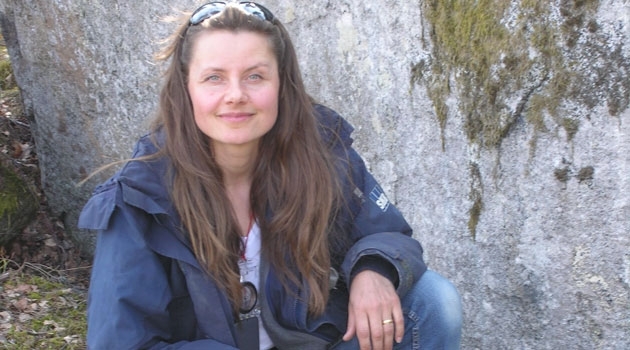“Sweden’s basement rock could become a future key source of sustainable energy”
Hello there Jenny Andersson, state geologist at the Swedish Geological Survey (SGU), who has received funding from Strategic Mobility, a Swedish Foundation for Strategic Research (SSF) initiative, to work 50 per cent at Uppsala University on a project studying Sweden’s basement rock. Her partners in the project are Christopher Juhlin and Jaroslaw Majka at the Department of Earth Sciences.
Congratulations on the grant of just over SEK 1.2 million! Your project has the title “The deep bedrock – a future key source of sustainable energy”. What is it about?
“I will be working primarily with old Precambrian basement rock in the mountain range in the Åre area. Together with my partners in the project, I will take part in investigations of deep drill cores from the basement rock beneath the mountain chain at depths of between 1.2 and 2.2 kilometres. The overarching goal is to better understand how the Earth’s crust was formed and its three-dimensional structure . The model is based on seismic structures discovered by the researchers at Earth Sciences. By combining geological and geophysical exploration methods, we can track geological processes in the Earth’s crust and increase our understanding of how mountain chains are formed.
“This is being made possible thanks to an impressive project initiated by the Department of Geophysics at Uppsala University a few years ago. That’s when drilling in Åre began in what is probably the biggest scientific effort within the field of bedrock geology in Sweden. In total 44 organisations, 14 countries and over 100 researchers from all around the world have participated. Today, there are two drill holes in the Åre area reaching depths of 2.3 and 2.5 km, respectively, where the researchers are studying the structure and mineralogy of the bedrock, rock mechanics, water flows and microorganisms.
“What is also exciting is that we have come down to levels where heat from the Earth’s interior is stored. At a depth of two kilometres, the temperature is 50 degrees C, so this geothermal energy represents an enormous source of energy. Previously, geothermal plants have only tapped heat closer to the surface down to a maximum of a few hundred metres. But over the past decade there has been great development in drilling technology, where in Finland they’ve become experts in tapping geothermal heat at great depths. And now there are drilling projects by Eon in the Municipality of Lund with a target depth of five to seven kilometres, where the heat could generate electricity.”
So the technology is promising, but what additional knowledge is needed to make the extraction of this energy source successful and above all sustainable?
“We need to be able to understand the basement at depth. No one has done any detailed surveys of the basement rock itself and looked more closely at the age, composition and mineralogy of the material that has been brought up in the Municipality of Lund. There is a lot of focus on fracture formation, but the bedrock also conducts heat in different ways depending on, for example, the distribution of quartz or uranium-bearing minerals. The formation and composition of basement rock is my speciality, and I have worked with deep drill holes in the USA and in Sweden at Forsmark and in many places in Skåne.
“Deep drilling technology does not emit carbon dioxide because there is no combustion, we just take care of the heat. The plants are currently quite expensive so they are less likely to be placed in the mountain range in the vicinity of Åre. However, in more densely populated areas such as in northern Stockholm and Uppsala, one could afford this type of plant and use heat from the deep basement rock for district heating.”
What are the risks associated with these deep drilling projects?
“There are many examples of where inadequate preliminary scientific studies have caused problems. In 2009, huge investments were made in Switzerland, but the project had to close down when the deep drilling triggered a series of earthquakes. This technology, called Enhanced Geothermal Systems (EGS), is a bit like fracking: you pump water down and create systems of artificial fractures in the Earth’s crust. When you fracture the Earth’s crust, you need to be able to read the movements in the rock mass, and Uppsala University is very good at this. Another very important lesson is that you need to have quite a good knowledge of the composition and structure of the rock and how water flows in the rock. The water being pumped down can disappear. Then you can use chemicals to plug fractures and reduce tremors. And what do we actually know about the chemical composition of the water down there? All of this can affect the plant.”
The project will last for two years – what are you looking forward to the most?
“First of all, I’m looking forward to working with Uppsala researchers to investigate the basement rock below Åre. I hope to use this knowledge for future work with basement rock in Skåne. It is very interesting to see how the most highly specialised geological survey can be used in the community, because it certainly can. Our communities are dependent on the nature of the bedrock, both politically and economically. If we can manage deep rock drilling for energy extraction in a sustainable way, it will be of great interest for energy and heat production in the future and could be the solution to a key part of our climate problem.”
Anneli Björkman

